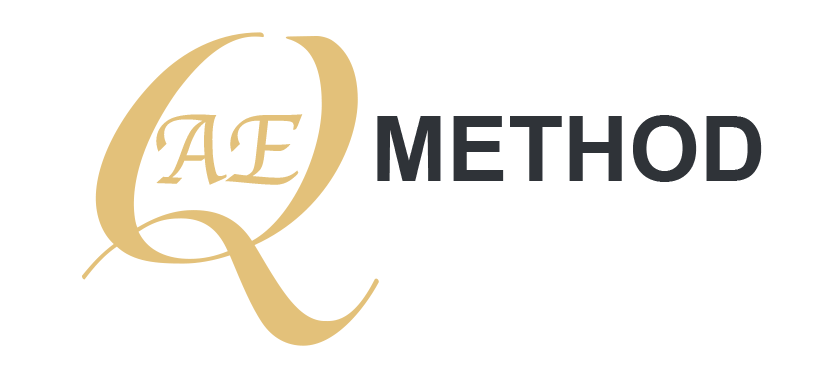Knee injuries, cartilage degeneration and meniscus injuries are common and frequent injuries.
Especially active sporty people are prone to these injuries. Many of my clients decided to take up learning of the AEQ method because of their knee problems. Furthermore, I’ve noticed the majority of my clients have the same cause for recurring knee problems and pain: severely tight, tense muscles of the center of the body, the core. The core is the part that ties rib cage with legs, it is strong and stable. However, the core muscles seem to be unable to relax. The primary function of the core is to move the rib cage and pelvis in all directions with about the same efficiency. Thus, muscles need to be able to contract as well as relax, and at the same time, be able to move the torso coherently and efficiently. Focus just on strengthening the muscles and effort-based progress is the main drawback of the modern way of life, training and rehabilitation. The latter approach is logical when considering a human being as a machine; it also gives good short-term results. However, ever more significant muscle contraction and feeling of stiff movement are the long-term results.
One must not forget that permanent search for better efficiency in the movement was the basic human need that enabled survival. Evolution was radically eliminating organisms that were not efficient enough to survive. Evolution of the human race was a constant struggle for survival, and it favored the ones who did more with less energy.
If we view the shape and movement of the human body through this perspective, we can easily see our unstable structure. A tall slim structure on two relatively small feet is very unstable compared to multiple-legged animals. And to answer the question, why would our species choose such shape of the structure and such way of movement: unstable structure can be moved with less energy than the balanced one. However, it is also crucial for survival to have good control over such an unstable structure.
Good control demands lots of data (feeling – proprioception), proper data processing (the brain) and enough moving structures with reasonable control (muscles) to be able to oversee the unstable structure (body) well; and because of that it was important for survival to perform all the necessary movements with as minimal consumption of energy as possible. That required learning the complex movement and lots of time to achieve self-reliance. Moreover, two distinctive features of a man, which gave a human being the advantage over other animal species, were revealed in a process: learning and adaptability, both deriving from the ability to learn. It is not logical that we have to strengthen our torso muscles just to be able to stand straight and breathe normally. Unnecessary or excessive contraction results in very inefficient use of energy.
It is only logical for the body, from the evolution standpoint, to perform the necessary activities as efficiently as possible and that a solid structure (skeleton) is the foundation for managing the gravitation. The solid structure (skeleton) doesn’t consume energy for this purpose, and the muscles that are the primary energy consumers should be used to move the skeleton efficiently. Moreover, the efficient use requires good coordination, and good coordination requires equally good ability to relax specific part of the muscles in a movement (antagonist’s muscles) as well as their contraction (agonist’s muscles).
Newton’s law clearly states: when something shortens then something else must elongate to maintain the balance and efficiency of movement. When we lean forward the muscles on the back of the body, need to lengthen and shorten on the front side of the body, and vice versa. The key to stability is well-controlled instability, which is notably evident in the core of the body as it is designed for the maximum mobility and it is the only part of the body that is not supported and reinforced by fixed bones. I’ve noticed an exceptionally strong core of the body as well as inferior ability to relax the core muscles at my clients with knee pain and problems. These clients face reduced agility and have difficulties with rotation of the core, pelvis, legs and hips.
Knees are not designed for rotation; however, they have to take on this task because the center of the body is not performing its designated task. Knees’ structure is designed for flexion and extension. And when our core is tense and incoherent the use of the knees is non-compliant with the structure, resulting in severe and repeating problems which only get worse by applying the classic approach of strengthening the stabilizer muscles of legs and torso.
By learning AEQ method and reducing sensory-motor amnesia, we effectively increase the sense of core muscles, which gives us more control over them and, consequently, better coordination in movement. This, in turn, increases efficiency and restores proper use of structure and joint actions. It enables relaxation when we are not moving (sleep) and increases the regeneration and rehabilitation of overloaded and incorrectly worn joints. After only a few months, the clients notice significant changes: they move more efficiently, the pain is weaker or even completely gone, and the knee problems start disappearing. However, definitive improvement is only possible if the wear or damage is not severe.
Therefore, the AEQ method is an effective and necessary part of therapy for painful and dysfunctional knees. It can prevent the recurrence of injuries after successful surgery and physical therapy rehabilitation. Severe pain, which usually accompanies or causes knee injuries, strains the muscles and makes us tense. Especially where it is most harmful in the long run, at the core. It is therefore essential that when standard rehabilitation is complete, we regain our sense, control, alignment, and use the body as it has evolved through evolution to perfection for the most efficient movement in gravity.






